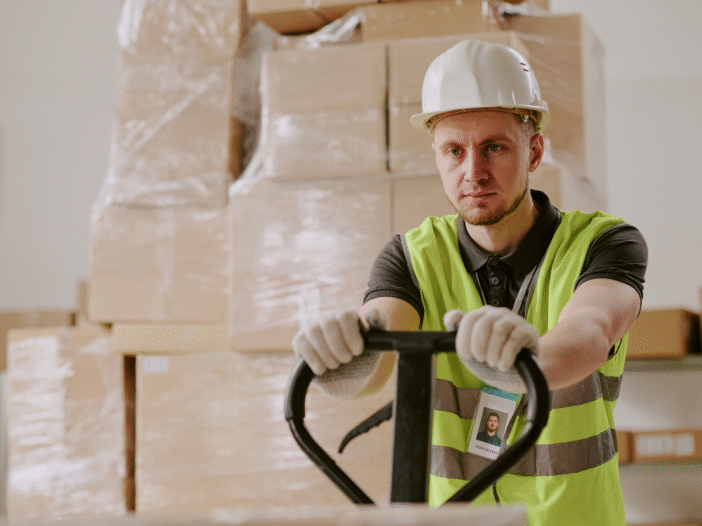
As a landlord, safeguarding your tenants from health risks is a legal and moral duty. This includes protecting them from legionella bacteria, which can cause severe illnesses like Legionnaires’ disease. This comprehensive guide explains the essentials of a legionella risk assessment for landlords and how to control the risks.
Why is legionella a concern?
Legionella bacteria thrive in water systems with temperatures between 20–45°C, stagnant water, and sources of nutrients such as rust or scale.
When airborne water droplets containing legionella are inhaled, they can cause illnesses ranging from mild Pontiac fever to fatal Legionnaires’ disease.
Although Legionnaires’ disease is rare in the UK, landlords must manage this risk to ensure tenant safety and comply with health and safety regulations (see ‘What are a landlord’s responsibilities?’ below).
For a more comprehensive understanding of the dangers of legionella, please read our guide, What is legionella and how dangerous is it?
What are the main risks in rented properties?
All purpose-built hot and cold-water systems can provide an environment where legionella bacteria can grow. Favourable conditions that encourage the bacteria to thrive are:
- Water temperatures between 20 and 45°C.
- Systems where water is stagnant and/or recirculated.
- Rust, sludge or scale in the water system that provides nutrients for bacteria to multiply.
- Water droplets, mist or spray that are dispersed into the air by systems such as whirlpool baths and showerheads.
Older properties with stored water systems that serve multiple properties are most at risk from legionella. Newer properties tend not to have water tanks or stored water systems, although this is not always the case.
Vacant properties, such as student accommodation, can be a breeding ground for legionella bacteria if water is left to stagnate.
What are a landlord’s responsibilities?
Under the Health and Safety at Work Act 1974 and Control of Substances Hazardous to Health Regulations 2002 (COSHH), landlords must ensure water systems in their properties are safe. Landlords who rent out a commercial or domestic property or a room in their own home have legal responsibilities for ensuring their tenants’ health and safety.
A landlord is defined as anyone renting a property they own under a lease or a licence shorter than seven years. Their health and safety duties cover a wide range of accommodation, including residential properties, provided for rent by:
- Local authorities.
- Housing association.
- Private sector landlords.
- Housing co-operatives.
- Hostels.
- Local authorities.
Do I need a legionella risk assessment as a landlord?
There is some confusion around whether a legionella risk assessment is a legal requirement for landlords.
The answer is that landlords must assess the risk of exposure to legionella, but a detailed landlord’s legionella risk assessment is not required in domestic premises. This is because the risk of exposure in domestic properties is low due to the frequent use of water.
However, if a tenant contracts Legionnaires’ disease from the water system in their home, the landlord may be liable to prosecution. The landlord would have to demonstrate in court that they had fulfilled their legal duty of care, so they must assess, control and record the risks. Therefore, carrying out a legionella risk assessment is advisable.
Landlords can carry out an assessment themselves if they are competent. Taking our Legionella Awareness Training is a good way to understand the risks and duty holder responsibilities.
Is a legionella risk assessment required for commercial properties?
Commercial buildings are likely to have more complex water systems than domestic premises, so a detailed risk assessment is required. An external consultant may need to be hired to carry out the risk assessment on behalf of the duty holder, because it must be carried out by a ‘competent person’.
A ‘competent person’ is described by the Health and Safety Executive as, ‘someone who has sufficient training and experience or knowledge and other qualities that allow them to assist you properly’.
Records of the assessment findings must be kept, along with the steps taken to control or prevent the risks and the results and dates of maintenance, inspections and tests.
The records should be kept for at least two years. In this way the duty holder will have established a legionella management system.
What steps can be taken to control legionella risks in domestic premises?
The Health and Safety Executive recommends the following simple measures for domestic properties:
- Keep hot water hot and cold water cold to control the proliferation of bacteria.
- Keep the water moving.
- Flush out water systems before letting the property.
- Ensure water tanks are tightly fitted to prevent debris from getting inside.
- Use control parameters, such as setting the temperature of hot water cylinders to ensure water is stored at 60°C to control bacteria proliferation but is at a safe temperature at the point of delivery such as the shower head or tap outlet.
- Remove redundant pipework.
Landlords should inform tenants of control measures that need to be maintained, such as regularly cleaning and disinfecting showerheads to prevent risks from water droplets. Tenants should inform their landlord if hot water is not heating properly.
Water should not be allowed to stagnate in properties left empty for the long term. This can be prevented by using hot and cold water taps and showers once a week.
The Health and Safety Executive advises that landlords ensure hot and cold-water outlets are used at least once a week to keep water flowing when properties are vacant.
How to conduct a legionella risk assessment for landlords
Landlords can either carry out a risk assessment themselves, if competent, or hire a specialist (see above). The steps include:
- Identifying potential risks. Inspect water systems to identify areas where legionella bacteria could grow, such as stagnant water, poorly insulated pipes, or water storage tanks.
- Identifying who is at risk. Any residents or visitors are likely more susceptible to infection due to age, illness, a weakened immune system – and whether they might be exposed to contaminated water droplets.
- Evaluating risk levels. Assess the likelihood of legionella bacteria developing and the potential harm to tenants, considering factors like water temperature, usage frequency, and system maintenance.
- Implementing control measures. Take steps to minimise risks, such as regularly flushing unused outlets, maintaining water temperatures outside the bacterial growth range, and cleaning storage tanks.
- Recording findings. Document the risk assessment process, identified risks, implemented control measures, and planned maintenance to ensure compliance with legal obligations.
For more detailed guidance on how to carry out a legionella risk assessment, please read our guide, What is a legionella risk assessment?
Download our free landlord legionella risk assessment template
This legionella risk assessment form for landlords is for domestic premises. Please tailor it to your property and circumstances, as appropriate.
Fill in the form below to gain access to our free template.

Adam Clarke
Managing Director (Consulting)
